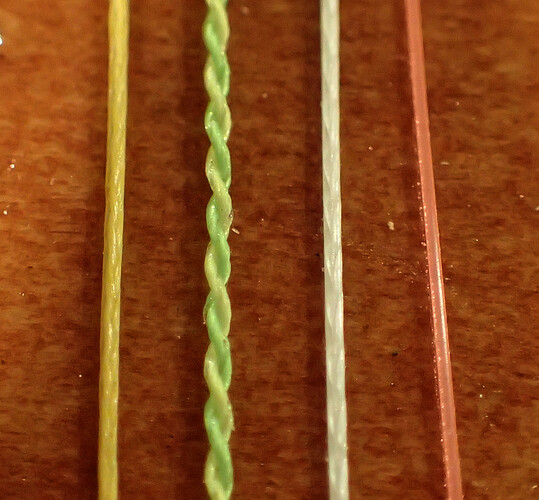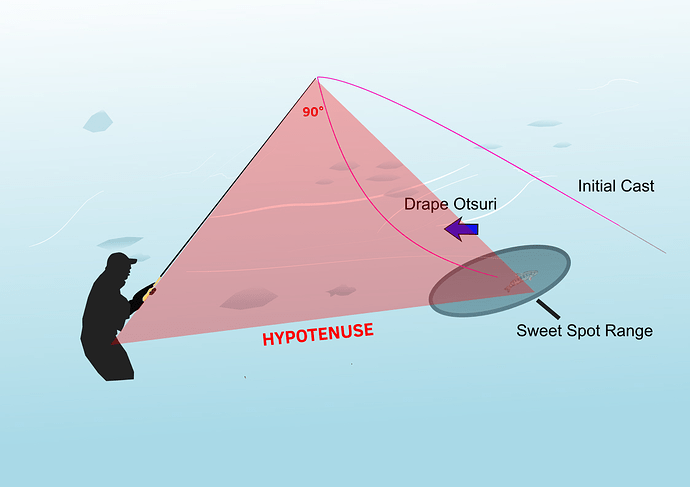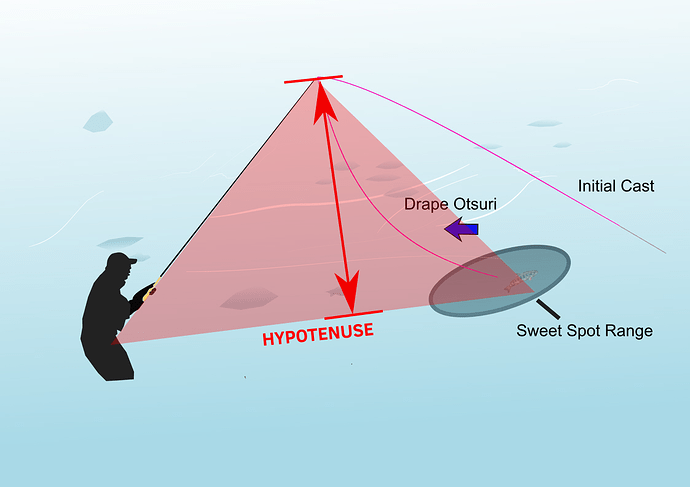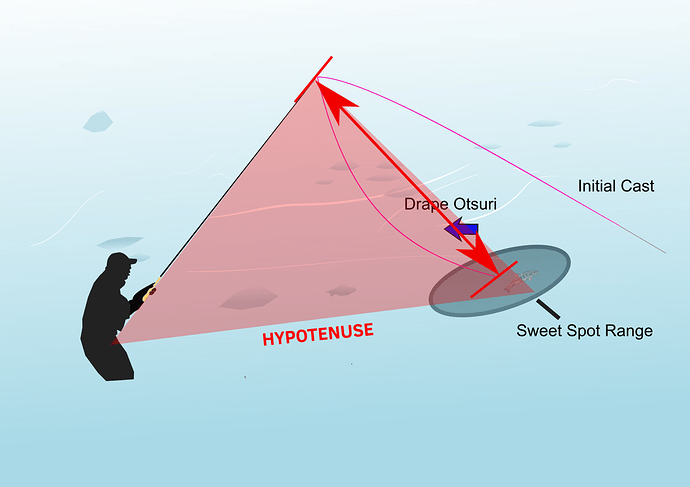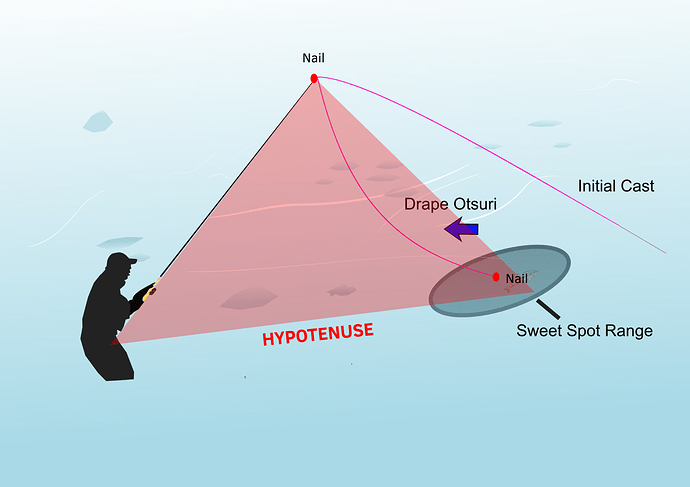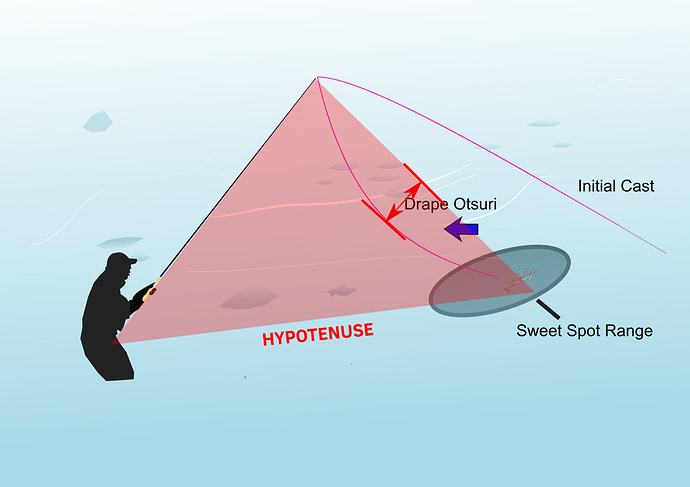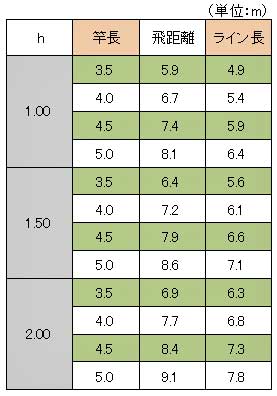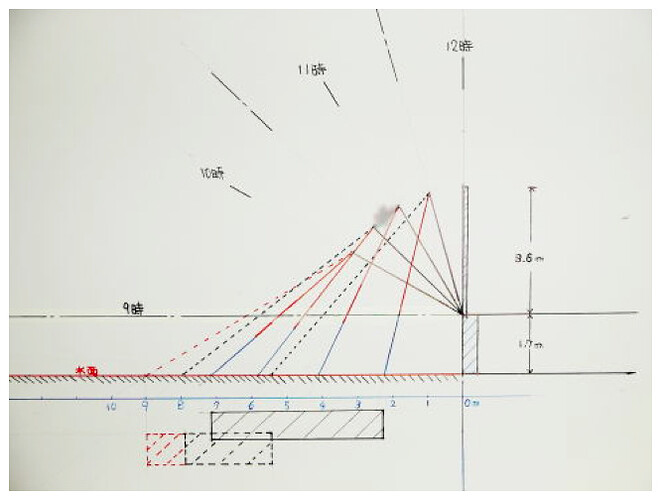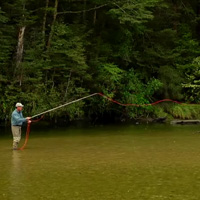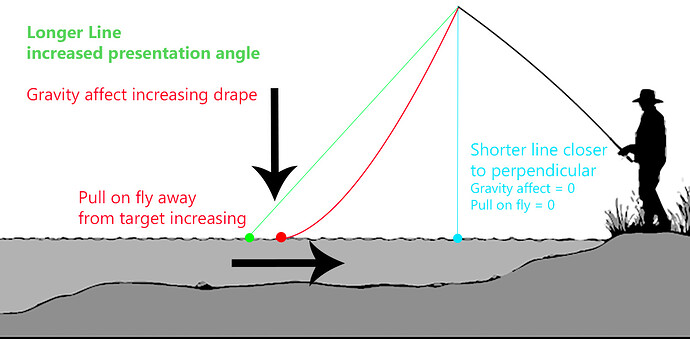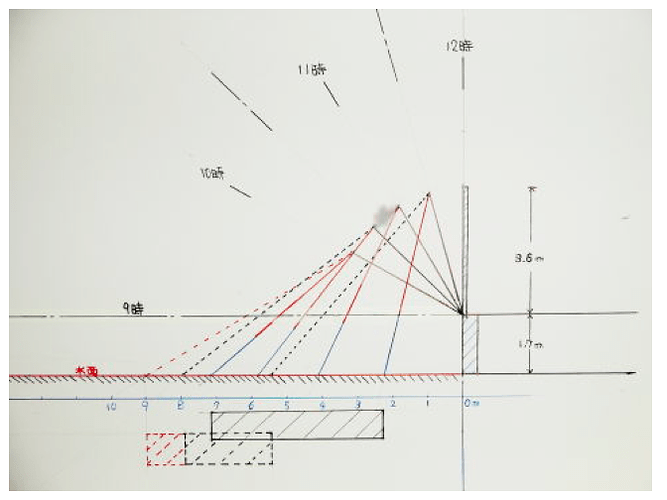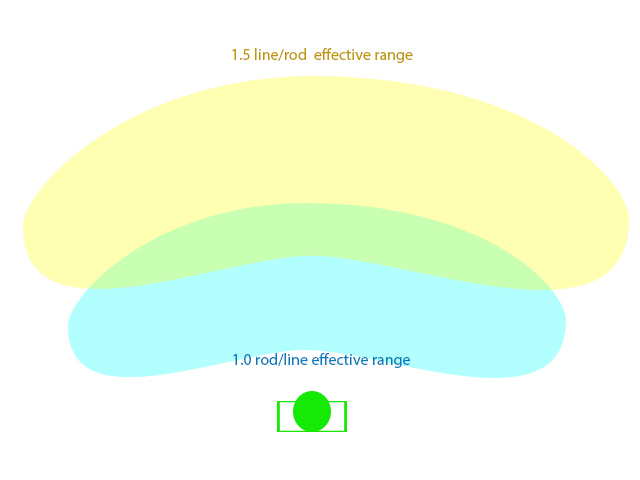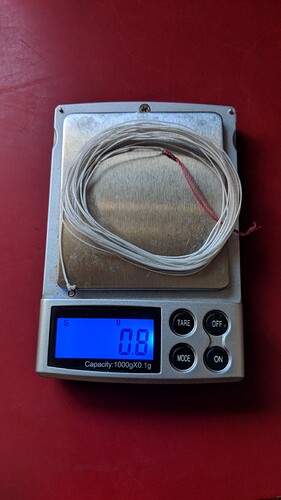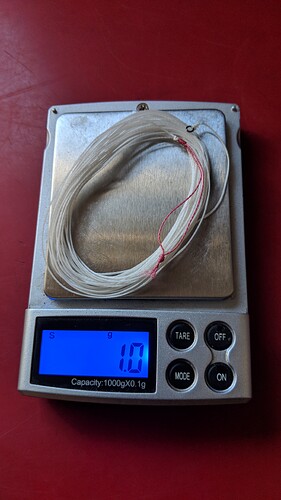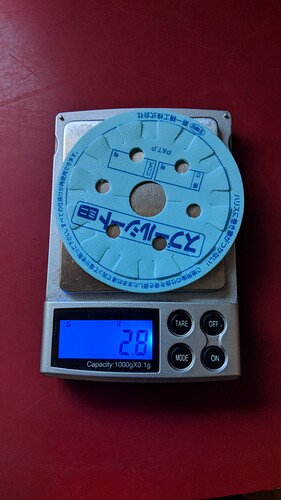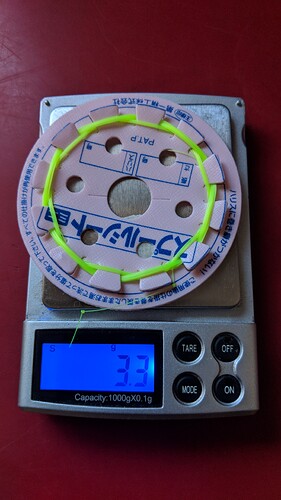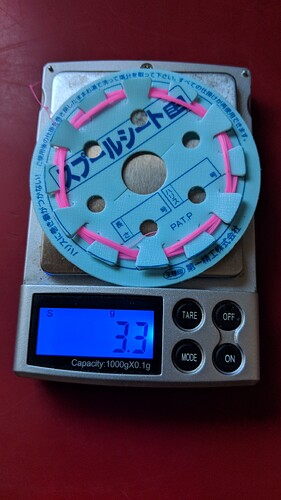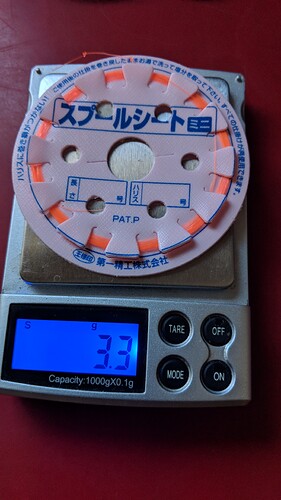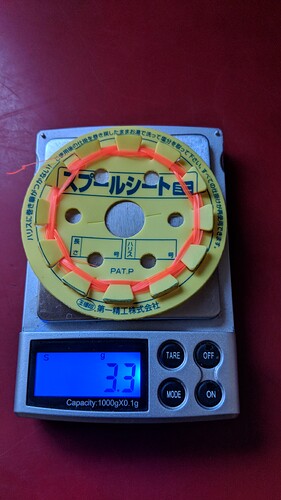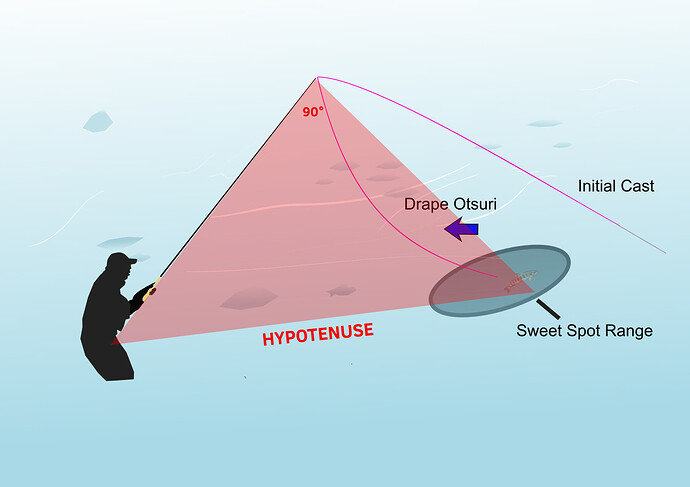I think probably the case can be made that if you want to fish at a longer distance it would be better to use a longer rod with a line that is not over 45% longer than the rod. Rather than using a longer line with a shorter rod. That as you point out in your drawing keeps a higher rod tip, with its advantages.
Another thing that should be considered that affects or ie it effects?, line sag is river current pulling tension in the line from drag of kebari, No effect on the amount of line sag in still water, but only in moving water. The point being that if fishing still water use a shorter line, if fishing moving water you could maybe get away with a longer line and have less line drape.
Another interesting thing can be deduced if you think about the previous casting distance diagram. This one:
Which is the total area that can be fished with different combinations of rod length and line length.
The two shaded rectangles below the x-axis are for two different combinations,
The upper box is for a 3.6m rod + a line of 5.3m. Or 1.47x rod length.
The lower box is for a 3.6m rod + a line of 6.9m, Or 1.91x rod length.
They represent the distances that can be cast to and fished, Except for the red shaded are, which the author concluded could not be effectively fished, rod tip to low for the 6.9m line, to much line on the water, and not enough line slack to effectively drift the kebari in a natural manner.
Of course you don’t spend your whole day fishing in only one direction. 270˚ west for example, You can fish a 360˚ circles. If you take a bird’s eye view and swing the diagram 360 degrees, you end up with concentric circles. You can calculate the area of those circles, subtract out the area next to the angler that can not be fished, and find the square meters area that can be fished.
The 3.6m rod with 5.3m line can be fished at rod angles of 10 o’clock (30˚ from horizontal) to 11:30 (75˚), and be fished from about 2.3m out to 7.3m, without to much line on the water or to much line sag, This give an area of about 151.5 m^2,
The 3.6m rod with 6.9m line can be fished at rod angles of 10:30 (45˚) to 11:30 (75). And over a range from about 5.5m out to 8m. The author regarded that area beyond 8m as the red zone, not effective area to be fished, though it could be cast to. So that area is excluded, This leaves a fishing area of 106m^2.
Surprisingly, a 30% smaller fishing area than the shorter line combination could be effectively fished, Not a bad choice, I recall reading somewhere that some researcher determined that most fish are caught when fly fishing within 27 ft, (8.2m) of where the angler was standing.
Taking the author’s concept (perhaps with other assumptions about the range of effective fishing distance) and applying to a different combination of a longer rod, with a line not over 1.47x rod length might reveal other surprises about rod angle and line sag, and effective fishing area.
Or just go fishing and not think about such things to long.
otoh, other people make different assumptions about good rod and line combinations.
If you have seen the video, Tenkara in the Land of Little Rivers, which included Dr. Ishigaki’s tenkara presentation in 2009 at the Catskills Fly Fishing Center, you may recall his recommended 4 listed line and rod combinations. 4 m rod with 4m, 5.5m , 7m , & 9.5m line, The last one later revised to a 4.5m rod with 10m line. So clearly other people have other ideas about that.
Or you can see a slightly different version of the same combinations from 2013 on the tenkarakebari blog
Tenkarakebari blog テンカラ三昧
Personally I don’t like fishing a line longer than 5.5m with a 4m or 4.5m rod. But more often 4.5m to 5m line. Though I’ve seen enough videos of Japanese tenkara anglers to realize that fishing with a 4m rod + 6m line + 1m tippet seems to be a more common popular combination when fishing on bigger rivers. Though I do try it, just to see how it goes, now and again.
Longest rod you can get away with, plus a not too long line and tippet seems to be the best way to go, to keep high rod tip, and line off the water. And maybe a little analysis of the chosen combination might reveal a surprise about which combination allows you have the largest fishing area. 
